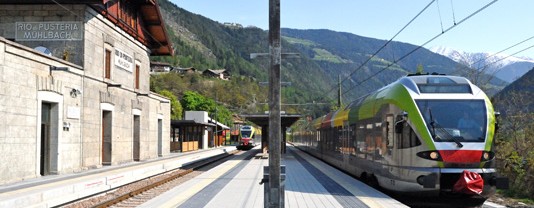STA handles all the works on the railway infrastructure in Aldo Adige and rebuilt the Val Venosta line, which now carries almost 2 million passengers a year. The next challenge is its electrification
Rail transport in Alto Adige enjoys a level of popularity that is markedly higher than in other Italian regions. The credit undoubtedly goes to a policy oriented toward support for public transport, although without “demonizing” private cars (in Bolzano, for example, convenient underground car parks have been built just five minutes from the very central Piazza Walter), and to a series of choices that have truly revolutionized the offered services. The first of these was undoubtedly the decision taken in 1999 to rebuild the Val Venosta railway and put it back in operation. A choice that at the time was looked upon with scepticism by a sizeable part of the population. The success of the “new” line, run directly by the Province and now transporting nearly 2 million passengers per year, has shown that a well-managed railway is a modern, efficient transport method and has been the catalyst for subsequent projects, upgrades strongly desired also on the italian State railways network and the decision to have a regional railway company to complement and round out the offer of Trenitalia. We talked about these issues with Joachim Dejaco, Director of STA, the company of Bolzano Province that deals with transport infrastructure
Mr. Dejaco, what exactly is STA and what role does it play in managing public transport in Bolzano Autonomous Province?
STA is an “in-house company” of Bolzano Province. In practice, we have the same tasks for the Province that RFI does for Italy at the national level: infrastructure manager. We’re responsible for the Val Venosta railway line, which extends for about 60 km from Merano to Bolzano and is owned by Bolzano Province. Today, though, thanks to the experience acquired in rebuilding this line, we also have the responsibility of managing a few rail projects together with RFI, where we as STA look after the civil works and RFI sees to the superstructure, signalling and electric traction.
by Franco Tanel
Full article is available only for registered users.
Click the link below to download pdf version of Railway Engineering
